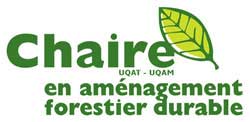
Autres sites à consulter :
Site départemental-UQO ISFORT ResearchGate GoogleScholar Rudiger Markgraf, Frédérick Doyon, Sylvain Delagrange, Daniel Kneeshaw. Biomass allocation and plant morphology explain the difference in shrub species abundance in a temperate forest 2023. Ecology and Evolution e10774
DOI : 10.1002/ece3.10774
Françoise Cardou, Alison D. Munson, Laura Boisvert-Marsh, Madhur Anand, André Arsenault, F. Wayne Bell, Yves Bergeron, Isabelle Boulangeat, Nicole J. Fenton, Sylvain Delagrange, Dominique Gravel, Benoît Hamel, François Hébert, Jill F. Johnstone, Bright B. Kumordzi, S. Ellen Macdonald, Azim Mallik, Anne C. S. McIntosh, Jennie R. McLaren, Christian Messier, Dave Morris, Bill Shipley, Luc Sirois, Nelson Thiffault, Isabelle Aubin. Above-and belowground drivers of intraspecific trait variability across subcontinental gradients for five ubiquitous forest plants in North America 2022. Journal of Ecology 110(7):1590-1605
DOI : 10.1111/1365-2745.13894
Christoforos Pappas, Yves Bergeron, Nicolas Bélanger, Han Y. H. Chen, Philip G. Comeau, Sylvain Delagrange, Olivier Blarquez, Amanda Diochon, Loïc D’Orangeville, Pierre Drapeau, Louis Duchesne, Elise Filotas, Fabio Gennaretti, Benoit Lafleur, Louis De Grandpré, Annie DesRochers, David Langor, François Lorenzetti, Charles Nock, Daniel Houle, Miguel Montoro Girona, Christian Messier, Barb R. Thomas, Simon Lebel Desrosiers, Rongzhou Man, Timothy Work, Daniel Kneeshaw. Smartforests Canada: A Network of Monitoring Plots for Forest Management Under Environmental Change. 2021. Climate-Smart Forestry in Mountain Regions 521-543
DOI : 10.1007/978-3-030-80767-2_16
Bright B. Kumordzi, Isabelle Aubin, Françoise Cardou, Bill Shipley, Cyrille Violle, Jill Johnstone, Madur Anand, André Arsenault, F. Wayne Bell, Yves Bergeron, Isabelle Boulangeat, Maxime Brousseau, Sylvain Delagrange, Nicole J. Fenton, Dominique Gravel, Ellen E. MacDonald, Benoît Hamel, Morgane Higelin, Louis De Grandpré, François Hébert, Nathalie Isabel, Azim Mallik, Anne C.S. McIntosh, Jennie R. McLaren, Christian Messier, Dave M. Morris, Nelson Thiffault, Jean-Pierre Tremblay, Alison Munson. Geographic scale and disturbance influence intraspecific trait
variability in leaves and roots of North American understorey
plants. 2019. Functional Ecology 33(9):1771-1784
DOI : 10.1111/1365-2435.13402
Philippe Nolet, Sylvain Delagrange, Kim Bannon, Christian Messier, Daniel Kneeshaw. Liming has a limited effect on sugar maple – American beech dynamics compared with beech sapling elimination and canopy opening. 2015. Can. J. For. Res. 45:1376-1386
DOI : 10.1139/cjfr-2015-0010
Sylvain Delagrange Changements de la phénologie du développement et des fonctions de la cime au cours de l'ontogénie chez l'érable à sucre (Marsh.) 17e colloque annuel du CEF, Université du Québec en Outaouais (2024-05-03)
Annie Deslauriers, Valentina Buttò, Sylvain Delagrange, Patricia Raymond, Sergio Rossi. Résistance au froid de l'érable à sucre 17e colloque annuel du CEF, Université du Québec en Outaouais (2024-05-03)
Sylvain Delagrange, David Rivest. Chiffrer la biodiversité : défis et solutions 17e colloque annuel du CEF, Université du Québec en Outaouais (2024-05-03)
Sylvain Delagrange Exploration de la relation entre croissance radiale et rendement acéricole 17e colloque annuel du CEF, Université du Québec en Outaouais (2024-05-03)
Frédérick Doyon, Sylvain Delagrange. Changements climatiques : acclimatation et adaptation des forêts tempérées nordiques Rendez-vous de la connaissance en aménagement forestier durable (2024-02-20)
Sylvain Delagrange Évolution des services écosystémiques selon différentes stratégies de gestion de l'infestation d'agrile du frêne dans un arrondissement de Montréal, QC 12e colloque annuel du CEF, Université Laval (2018-04-30)
Sylvain Delagrange L’efficience d’interception de la lumière : un trait fonctionnel crucial pour la régénération forestière? Midi-foresterie (2013-03-19)
Sylvain Delagrange Influence de la disponibilité en lumière et de la taille sur les attributs fonctionnnels et le bilan de carbone de l'arbre durant les premiers stades de développement. Soutenance thèse (2004-03-05)
